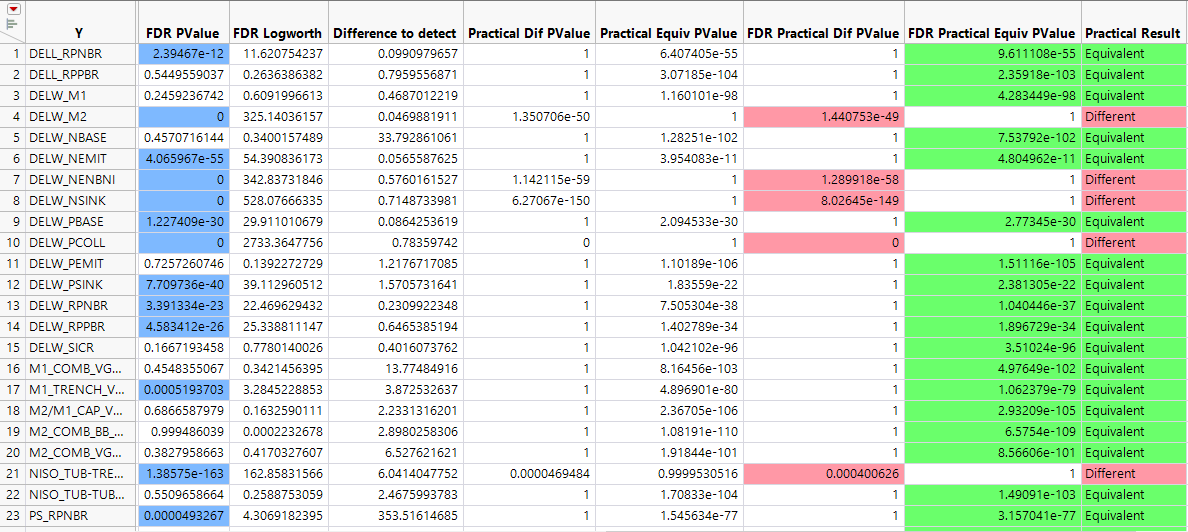Example of Tests of Practical Significance and Equivalence
Use the Response Screening platform to test for practical differences.
1. Select Help > Sample Data Folder and open Probe.jmp.
2. Select Analyze > Screening > Response Screening.
3. Select the Responses column group and click Y, Response.
4. Select Process and click X.
5. Click OK.
6. Click the Response Screening red triangle and select Practical Differences and Equivalences.
7. Type 0.15 in the box next to Enter a portion of Spec Range or 6*Sigma.
8. Click OK.
9. Click the Response Screening red triangle and select Save Tables > Save Means Differences.
Figure 24.8 shows a portion of the data table. For each response in Y, the corresponding row gives information about tests of the New and the Old levels of Process.
Figure 24.8 Means Differences Table, Partial View
Because specification limits are not saved as column properties in Probe.jmp, JMP calculates a value of the practical difference for each response. The practical difference portion of 0.15 that you specified is multiplied by an estimate of the 6σ range of the response. This value is used in testing for practical difference and equivalence. It is shown in the Difference to detect column.
The FDR PValue column shows responses whose p-values indicate significance. The FDR Practical Diff PValue and FDR Practical Equiv PValue columns give the p-values for tests of practical difference and practical equivalence. Note that many columns show statistically significant differences, but do not show practically significant differences.
10. Display the Means Differences data table and select Analyze > Distribution.
11. Select Practical Result and click Y, Columns.
12. Click OK.
Figure 24.9 shows the distribution of results for practical significance. Only 36 tests are different, as determined by testing for the specified practical difference. For 6 of the responses, the tests were inconclusive. You cannot tell whether the responses result in a practical difference across Process.
Figure 24.9 Distribution of Practical Significance Results
The 36 responses can be selected for further study by clicking on the corresponding bar in the plot.

